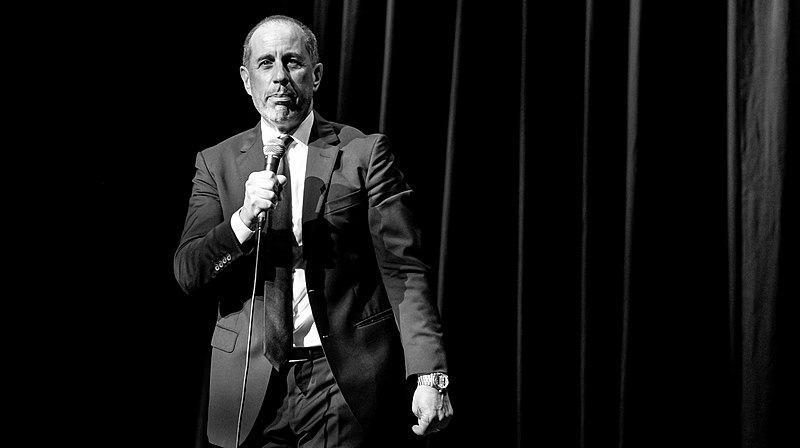The Dread of the Podium

Seinfeld was certainly right about one thing: public speaking consistently tops just about any compiled list of fears. In fact, a 2015 study conducted by Chapman University found public speaking topped the list of personal phobias, narrowly beating out heights, bugs and snakes, and drowning.
What causes the crippling fear associated with public speaking, also known as glossophobia, and why do so many people feel it? What makes getting up in front of an audience and speaking strike terror in the hearts of so many? This response to public speaking baffles the rational mind, confused as to why such a situation—the sharing of information with people who likely have interest to hear the message—would cause so much anxiety in even the most confident of individuals. Coming up with a logical reason to explain the source of this fear can seem confusing, if not impossible. Science, biology in particular, can explain this phenomenon.

Relatively speaking (i.e., in comparison to the entire history of the human species), people have not lived in civilized society for very long. The vast majority of individuals do not encounter wild animals as a part of their daily lives, nor do they come face to face with hostile scavengers seeking to do them harm. However, each and every person has biological mechanisms built into her or his brain to cope with such situations.
When a person perceives a potential threat, her or his body’s limbic system kicks into high gear, producing the “fight or flight” response. This supposed threat triggers the limbic system and convinces it that the prolonged eye contact from multiple sources (i.e., the people watching the speech) causes it to interpret this situation as a room full of hostile people committed to causing harm. The system sends a signal to the adrenal glands, which sit atop the kidneys, and they begin pumping adrenaline and other hormones into the bloodstream.
As adrenaline hits the bloodstream, it acts like pure liquid energy, and rightly so. Ever read a story about a panicked mother who single-handedly lifted a car off of her child? The problem occurs when logical neocortex (the thinking portion of the brain responsible for language and rational thought) attempts to calmly deliver an effective speech. Herein lies the problem.
The adrenaline immediately increases the heart rate, thereby also increasing blood pressure. Next, the air passages to the lungs expand, the pupils enlarge, blood gets redistributed to the muscles, and blood glucose gets re-routed to the brain. As the body’s senses go on high alert, the increase in blood pressure also increases the amount of heat produced by the body, and as a result, people begin sweating to compensate. A large differential exists between the amount of available energy from the adrenaline rush and the demand for energy placed on the body while trying to remain calm and collected. This results in seemingly uncontrollable trembling. The hands shake, knees wobble, and even the voice begins to tremble, all because the bodies’ muscles want to expend all the extra energy coursing through it.
Meanwhile, despite all efforts to try and remain still, muscles tremble involuntarily in protest. As the body’s hydration becomes redirected to these muscles, the throat begins to dry up, followed by the mouth. The salivary glands temporarily shut down, causing a “cottonmouth” effect. The stomach tightens up because the parasympathetic system that covers the “rest and digest” function for the body pauses while the speaker attempts to deal with all the anxiety. This explains why the stomach feels like it’s tied up in knots. The increase of blood sugar in the brain feels similar to how a computer reacts when opening up too many programs at once, and it shuts down due to overload.
Note to Self

Good news. If any of these symptoms sound familiar to you, based on previous public speaking experience, then you are completely 100% normal. You just experienced the naturally instinctive biological response to such a scenario. The even better news is that you can effectively manage such effects. Just because you currently feel pre-wired to want to flee the room once your nerves kick in does not mean you have to allow yourself to become beholden to such a response.
Don’t let fear of public speaking get to you; deliver your message with confidence.

